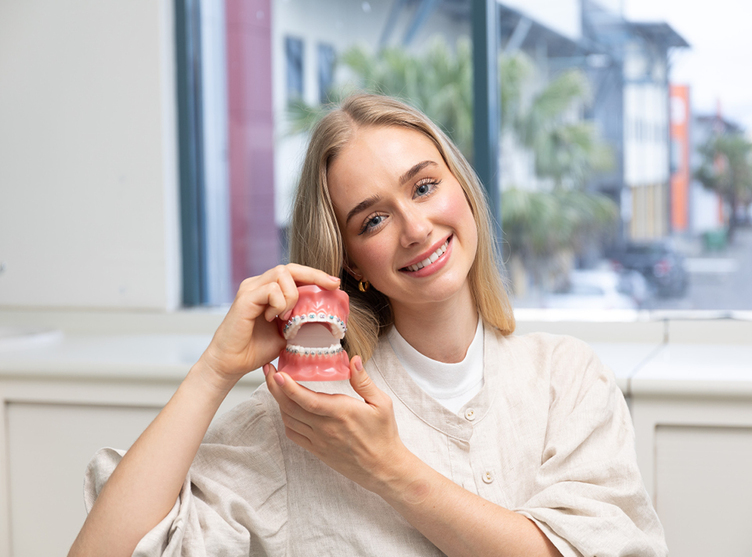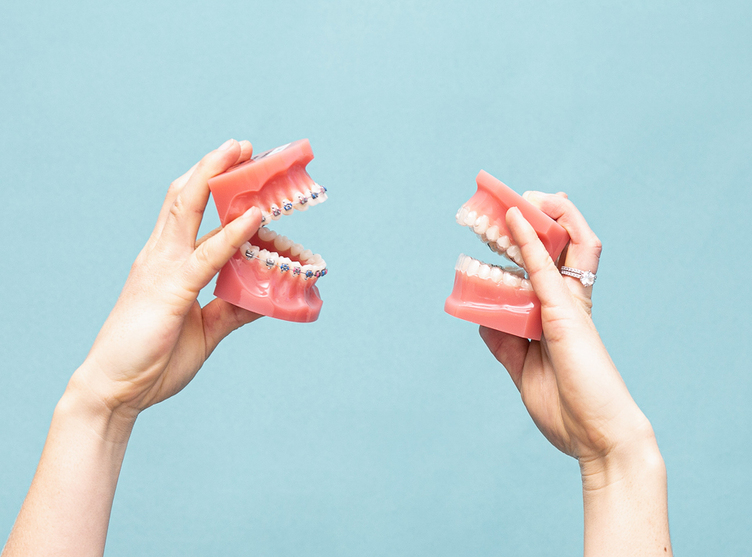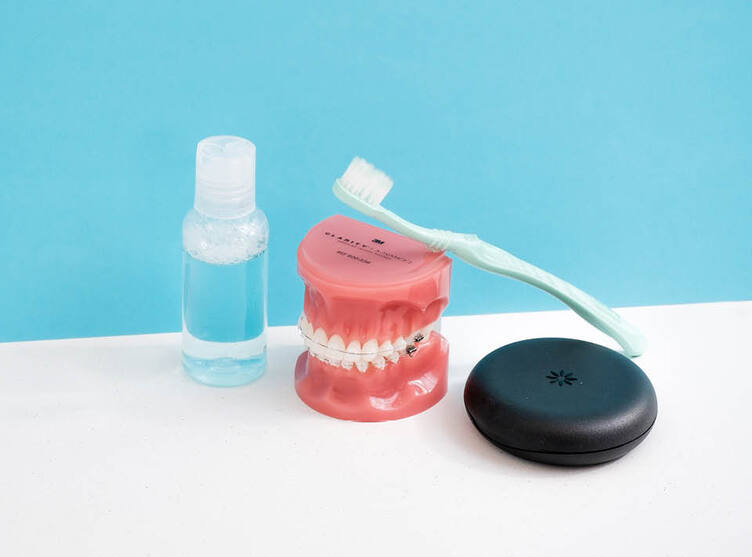
Braces are dental devices that help to realign and straighten your teeth. By applying constant pressure on the teeth over time, braces gradually move them into their desired position in the mouth. The result is a beautiful smile you’ll love for years to come!
Adults and children get braces for various reasons. The most common cause is to improve the aesthetics of the smile and correct misaligned, crowded or crooked teeth. Some people also use braces to correct an overbite or underbite to improve jaw alignment or to help with speech issues caused by misaligned teeth.
Braces can also help treat more serious dental problems such as TMJ disorders and stabilise loose adult teeth at risk of falling out. Generally speaking, the goal is to help adults and children create a healthy bite and improve overall oral health.
The length of treatment can vary, depending on the severity of each case. Our team of treatment consultant and orthodontist will discuss this with you during your initial consultation.
Factors that Affect Orthodontic Treatment Time
Here are some main factors that can affect the amount of treatment time it takes to wear braces:
- Age of the patient: Typically, children may require braces for a shorter duration than adults due to their teeth and jawbones still developing and growing, making them more susceptible to movement.
- Severity of the condition: The duration of braces treatment varies depending on the complexity of the orthodontic condition. Mild cases may only require braces for 12-18 months, whereas more complicated conditions may require them for up to three years.
- Type of braces: There are different types of braces available, including traditional metal, ceramic, lingual, clear braces, and clear aligners, each with varying levels of effectiveness and strength. Therefore, the duration of wearing braces may vary accordingly.
- Compliance with treatment plan: Adhering to orthodontic instructions and attending regular appointments is vital to successful treatment. Non-compliance can lead to longer treatment times.
- Oral hygiene: Proper oral hygiene is essential while wearing braces. Regular brushing and flossing, and avoiding sugary or sticky foods can reduce the treatment duration.

Average Wear Time for Braces
The average wear time for different types of braces may vary:
- Traditional metal braces: Patients typically wear traditional metal braces for 12-36 months, with an average duration of around 24 months.
- Clear ceramic braces: Compared to metal braces, clear ceramic braces are usually slightly more expensive however the duration will be the same as metal braces, lasting around 12-30 months.
- Lingual braces: These braces are more expensive but are less visible and generally require less time to complete treatment typically taking 12-24 months to straighten teeth.
- Invisalign: Clear aligners are a less noticeable alternative to traditional braces. Treatment with Invisalign typically lasts 12-24 months, although treatment time may differ depending on the patient.
You will learn more about the estimated treatment period during your initial consultation with us.

Regardless of the type of braces, the patient should follow their dentist or orthodontist’s instructions carefully and attend all scheduled appointments to achieve the best results for their teeth. With proper care and compliance, patients that do braces can achieve a beautiful, healthy smile in no time!
How to look after your teeth while you wear braces.
Many people want to know how to take care of their teeth and get the best results from their treatment. Here are a few tips that may help:
Following the Treatment Plan
Adhering to your orthodontist’s advice is crucial for a successful treatment outcome. Treatment plan should also include regular check-ups and adjustments. By strictly following the orthodontic treatment plan, patients can ensure that their braces remain on for the recommended duration, leading to a beautiful new smile at the end of treatment.
Maintaining Good Dental Hygiene
Regular brushing and flossing are crucial to maintaining healthy teeth and gums, particularly when wearing braces. For individuals with braces, electric toothbrushes with round heads are suitable as they can reach difficult-to-access areas between the brackets, wires, and rubber bands. It is essential to avoid sugary or sticky foods that can cause plaque buildup on the braces. Furthermore, patients must attend regular dentist appointments throughout their treatment with braces.

Avoiding Certain Foods and Activities
As much as we want to eat all the food we want, certain foods may be off-limits for those who have to wear braces. Foods that are too hard, chewy or sticky can easily damage your braces’ metal brackets and wires. Hard foods include nuts, popcorn, hard candy and ice. Chewing gum should also be avoided as it can easily get stuck in the braces.
In addition to avoiding certain foods, activities such as contact sports or other activities that could cause trauma to the mouth should be avoided while wearing braces. Wearing a mouthguard helps to protect your teeth and gums.
Regular Visits to the Orthodontist
Seeing the orthodontist for regular check-ups is essential to treatment and will help keep your braces in top condition throughout the process. This allows the orthodontist to monitor the progress of treatment, adjust the braces if necessary, and recommend any additional treatments needed.

Conclusion
The amount of time it takes to wear braces varies from person to person, depending on their age, the severity of their orthodontic condition, and other factors. However, with proper orthodontic care and compliance with their specialist’s instructions, brace-wearers can achieve beautiful results in no time!
It is important to remember that the key to achieving successful orthodontic treatment with braces is patience and dedication from both the patient and the orthodontist. The result of wearing braces will be a healthy and beautiful smile for both children and adults.
